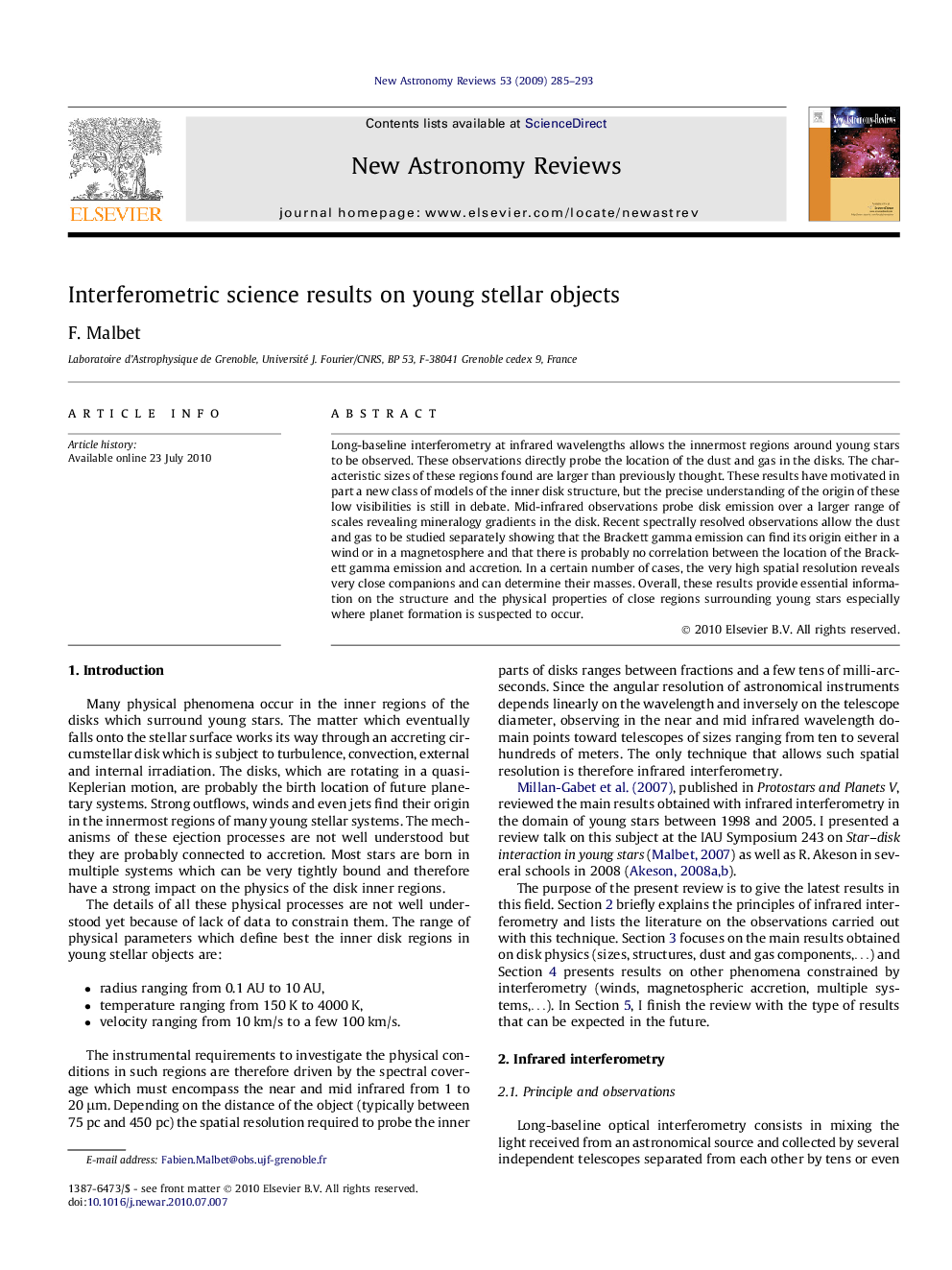| Article ID | Journal | Published Year | Pages | File Type |
|---|---|---|---|---|
| 1780019 | New Astronomy Reviews | 2009 | 9 Pages |
Abstract
Long-baseline interferometry at infrared wavelengths allows the innermost regions around young stars to be observed. These observations directly probe the location of the dust and gas in the disks. The characteristic sizes of these regions found are larger than previously thought. These results have motivated in part a new class of models of the inner disk structure, but the precise understanding of the origin of these low visibilities is still in debate. Mid-infrared observations probe disk emission over a larger range of scales revealing mineralogy gradients in the disk. Recent spectrally resolved observations allow the dust and gas to be studied separately showing that the Brackett gamma emission can find its origin either in a wind or in a magnetosphere and that there is probably no correlation between the location of the Brackett gamma emission and accretion. In a certain number of cases, the very high spatial resolution reveals very close companions and can determine their masses. Overall, these results provide essential information on the structure and the physical properties of close regions surrounding young stars especially where planet formation is suspected to occur.
Related Topics
Physical Sciences and Engineering
Physics and Astronomy
Astronomy and Astrophysics
Authors
F. Malbet,
